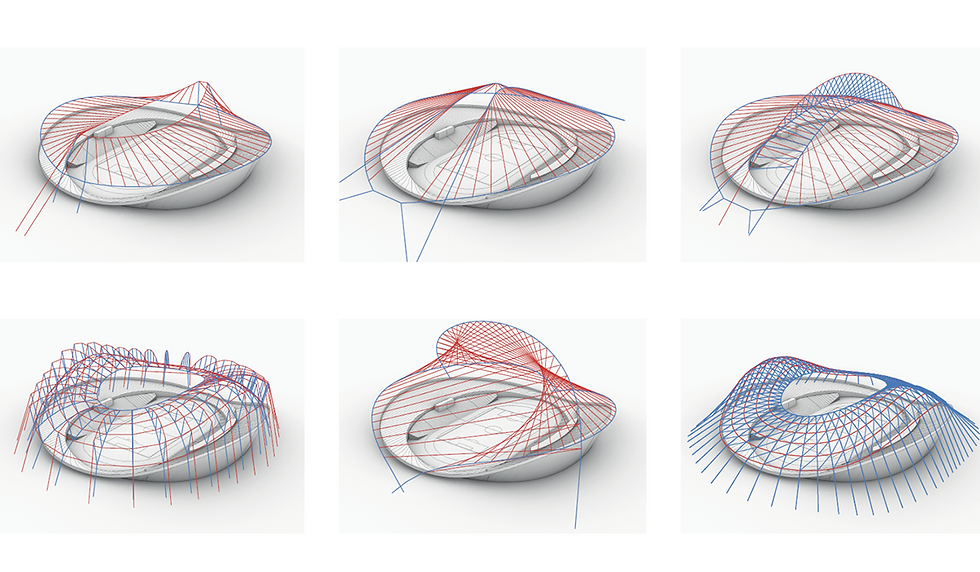WS4 : STRUCTURAL FORM-FINDING THROUGH MACHINE LEARNING
Instructors: Pierluigi D'Acunto, Vahid Moosavi, Catherine Rankine, Vincenzo Reale
The aim of this workshop is to introduce the participants to a novel design method for the form-finding of equilibrated structures in three-dimensions based on computational methods for structural design, like the Force Density Method (FDM) and the Combinatorial Equilibrium Modelling (CEM). The FDM is a powerful form-finding approach that allows designing complex spatial structures in equilibrium, such as tension-only or compression-only surface structures. The CEM is an innovative geometry-based approach to structural design that is grounded on vector-based 3D graphic statics and graph theory, and which is particularly tailored for the design of mixed tension-compression structures. The design process will be supported by the use of Machine Learning (ML) algorithms, such as Self Organising Map (SOM) for clustering, Gradient Boosted Trees (GBT) for classification, and Convolutional Neural Network (CNN) for deep learning). These algorithms will be used to guide the exploration of the design space generated by the FDM or the CEM.
The workshops will open up new perspectives in the design of structures in static equilibrium, by enabling the participants to take full advantage of the relationship between topology, geometry, and structural behaviour starting from the early stages of the design process. To make this approach operative, a series of interactive, computer-aided design tools within the 3D software environment McNeel Rhinoceros and Grasshopper will be introduced. The tools enable the designers to work in
real-time and in an intuitive way to generate non-conventional 3D spatial networks in equilibrium for any designer-specified connectivity, any combination of compression and tension forces, and any set of force magnitudes.
During the first workshop day, the theoretical background of FDM and CEM will be introduced, including some basic elements of graphic statics and graph theory, as well as important concepts from ML algorithms, which are relevant for structural design. Afterwards, the main functionalities of the related computer-aided design tools within the 3D software environment McNeel Rhinoceros and Grasshopper will be demonstrated via simple exercises. During the second day, participants will be
asked to develop an individual design exercise to get familiar with the FDM, the CEM, and ML and the related design tools. Participants will develop their proposals with help from tutors. In this phase, advanced coding tutorials with Python will be provided to address specific design-related questions of the participants. Furthermore, the participants will be asked to build simple physical models to
illustrate the structural concept of their proposals.




The instructors

Catherine Rankine
Arup London

Vahid Moosavi
ETH Zürich

Pierluigi d'Acunto
Technical University of Munich

Vincenzo Reale
Arup London
